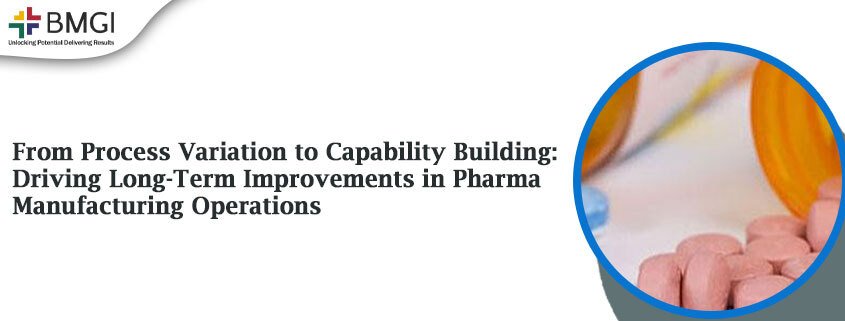From Process Variation to Capability Building: Driving Long-Term Improvements in Pharma Manufacturing Operations
In pharmaceutical manufacturing, process variation is more than a technical issue. It directly impacts batch consistency, product quality, regulatory compliance, and ultimately, patient safety. Despite sophisticated technologies and structured environments, many pharma companies continue to struggle with recurring deviations, unpredictable outcomes, and slow improvement cycles. Tackling these challenges requires more than one-off fixes. It demands a deliberate focus on capability building.
Understanding the Impact of Process Variation
Process variation can originate from multiple sources: raw material inconsistencies, equipment malfunctions, untrained personnel, or gaps in procedures. Even minor shifts in conditions can disrupt production, triggering quality investigations and delaying product release. Over time, variation becomes a hidden cost—slowing throughput, increasing rework, and eroding operational reliability.
A capability-driven approach doesn’t just address the symptoms of variation. It works at the system level to identify root causes, build internal expertise, and prevent recurrence. This is especially important in an industry where compliance and repeatability are non-negotiable.

Building Capability for Long-Term Gains
To achieve sustainable improvement, pharmaceutical manufacturers need to invest in a set of integrated strategies that reinforce each other over time.
1. Structured Problem Solving
One of the most effective methods for long-term improvement is adopting a consistent, data-driven problem-solving framework. Techniques from Lean, Six Sigma, and TRIZ help teams go beyond surface-level fixes and identify what’s really causing operational issues. Embedding these approaches into daily routines encourages a culture where teams are empowered to own problems and solve them methodically.
2. Workforce Training and Skill Development
Capability building starts with people. Investing in role-based training helps operators, technicians, and managers understand not just what to do, but why it matters. Regular workshops, on-the-floor coaching, and certification programs can strengthen practical understanding and increase ownership at all levels.
A multinational pharma company that introduced a structured Green Belt program saw a 35 percent reduction in deviation recurrence within 12 months. The key was not just training individuals, but aligning teams to shared improvement goals.
3. Continuous Improvement Infrastructure
Creating long-term impact requires more than sporadic projects. Companies that succeed in capability building typically institutionalize continuous improvement. This includes dedicated OpEx teams, visual management systems, cross-functional huddles, and structured idea-generation platforms. These systems keep momentum alive and help surface problems early.
4. Technology That Supports, Not Replaces
While automation and digital tools are valuable, technology should be seen as an enabler, not a solution in itself. Digital dashboards, electronic batch records, and real-time monitoring systems work best when paired with teams who understand how to interpret and act on the data. Capability building ensures that technology adds value by enhancing human decision-making, not bypassing it.
5. Regulatory Integration
Improvement efforts must work within the boundaries of strict compliance. Capability building should include training on current Good Manufacturing Practices (cGMP), data integrity principles, and documentation discipline. When improvement frameworks are aligned with regulatory expectations, companies can scale change without risking compliance.
Tailoring Strategies to Real-World Pharma Challenges
Pharmaceutical manufacturers face unique pressures: variable demand, long lead times, complex validation requirements, and a low tolerance for failure. To be effective, capability-building strategies must reflect this reality. That means designing training programs specific to batch operations, developing root cause analysis tools aligned with regulatory terminology, and setting up improvement dashboards that reflect metrics meaningful to quality and compliance.
Final Thoughts
Addressing process variation through capability building is not a quick fix. It is a strategic commitment to developing people, systems, and thinking habits that endure. When pharmaceutical companies build internal strength in problem solving, training, and execution, they not only reduce deviations but also improve consistency, speed, and product quality.
In a regulated environment where the margin for error is minimal, the companies that build capability are the ones best positioned to achieve reliable performance and long-term growth.


Leave a Reply
Want to join the discussion?Feel free to contribute!